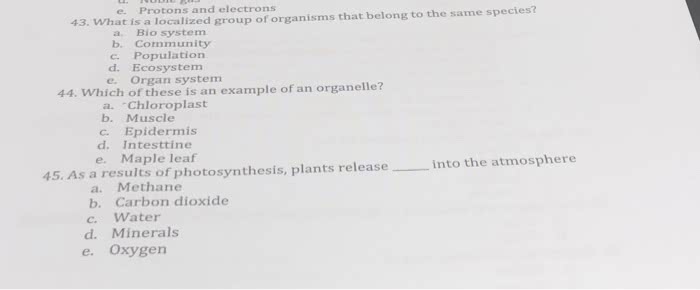msk626326
MD SkAmity University - Kolkata
0 Followers
0 Following
0 Helped
msk626326Lv2
16 Dec 2023
Answer:Certainly! The total cost (C) for an order of more than 10 units but up...
msk626326Lv2
8 Dec 2023
Answer:The given equality is:\[ (-2t + 1, 4 - 2s) = (s + 6, 61 - 4t - (20 + 1)...
msk626326Lv2
8 Dec 2023
Answer:To find the derivative of the polynomial \(y = e^4 + z^2 - 5æ + 1\), we...
msk626326Lv2
8 Dec 2023
Answer: **a) Percentage of Children with Cystic Fibrosis (nn) from Couple with...
msk626326Lv2
8 Dec 2023
Answer:**Scenario 1: Both Parents are Carriers (Aa)****Possible Genotypes of G...
msk626326Lv2
8 Dec 2023
Answer:To determine the probability of two carriers (heterozygous for CF) havi...
msk626326Lv2
8 Dec 2023
Answer:**Question 1:** The atomic number is the number of protons in an atom. ...
msk626326Lv2
8 Dec 2023
Answer:43. The correct answer is: c. Population44. The correct answer is: a. C...
msk626326Lv2
8 Dec 2023
Answer:B) THE FORMATION OF FREE OXYGEN IN THE ATMOSPHERE FOR THE FIRST TIME
msk626326Lv2
8 Dec 2023
Answer:b) a layer of iridium 63 million years down
msk626326Lv2
8 Dec 2023
Answer:"Heneral Luna," a film directed by Jerrold Tarog, provides an opportuni...
msk626326Lv2
8 Dec 2023
Answer: The Flying Tigers, officially known as the American Volunteer Group (A...
msk626326Lv2
7 Dec 2023
Answer:A) Hole in ozone layer
msk626326Lv2
7 Dec 2023
Answer:a) Transfer of pollen from anther to stigma
msk626326Lv2
7 Dec 2023
Answer:Certainly! Here are the journal entries to record the transactions:1. M...
msk626326Lv2
7 Dec 2023
Answer: 🏷️ GET 20% OFF GRADE+ YEARLY SUBSCRIPTION →Accounting13 Dec 2019Notes ...
msk626326Lv2
7 Dec 2023
Answer:Controllable risk factors for cardiovascular disease or heart attacks i...
msk626326Lv2
7 Dec 2023
Answer:Controllable risk factors for cardiovascular disease or heart attacks i...
msk626326Lv2
7 Dec 2023
Answer:The perspective on whether social stratification is good or bad for soc...
msk626326Lv2
7 Dec 2023
Answer:B) Sodium bicarbonate
msk626326Lv2
7 Dec 2023
Answer: D) Soil
msk626326Lv2
7 Dec 2023
Answer:Ladies and gentlemen,Thank you for giving me the opportunity to address...
msk626326Lv2
7 Dec 2023
Answer: To find the amount of work required to empty the trough by pumping the...
msk626326Lv2
7 Dec 2023
Answer:The vector parametric form of a line through a point \(P(x_0, y_0, z_0)...
msk626326Lv2
7 Dec 2023
Answer:To find the vector in the opposite direction to \(\mathbf{u} = \langle ...
msk626326Lv2
7 Dec 2023
Answer:To find the equation of the plane in \(xyz\)-space through the point \(...
msk626326Lv2
7 Dec 2023
Answer: It looks like you've provided some lecture codes or titles. How can I ...
msk626326Lv2
7 Dec 2023
Answer: The meaning of the simile in the paragraph is:◯ Marta's skating is ver...
msk626326Lv2
7 Dec 2023
Answer:Sure, let's get started! 1. What is the capital of France?
msk626326Lv2
7 Dec 2023
Answer:B) Gymnosperms
msk626326Lv2
7 Dec 2023
Answer:To find the maximum area for a square inscribed in a cosine function wi...
